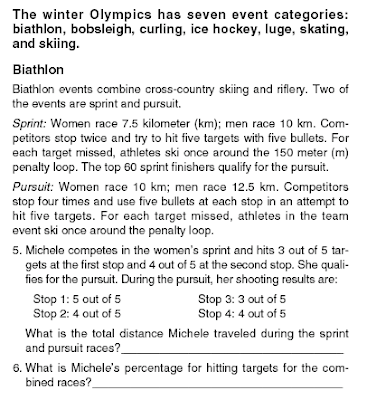As a middle school teacher, I think this is even more imperative.
As an introduction to polyhedrons, I asked my students to play with wooden polyhedrons at their tables without any rules other than playing safe and fairly.
Out of an 80 minutes session, I gave them around 30 minutes just to see what they would do.
All the students were very involved talking and playing with the blocks. I walked around a little, but mostly reserved myself time to simply observe.
I noticed how happy and well adjusted my students seemed. They enjoyed working together at building towers or ramps or little villages. It was a relaxed environment.
When I called attention to the class, I simply asked them to choose 8 blocks to keep at the table and return the rest. It seemed that after 30 minutes, they were ready to move on. The clean-up was quick and painless.
It was interesting how they chose their 8 blocks. All the groups chose eight distinct blocks, allowing me to make a simple comment on the ways we begin to classify polyhedrons as prisms or pyramids. They immediately looked to see how this classification played out with their particular blocks.
We then went over basic vocabulary and I asked them to take careful notes as I wrote on the Smartboard: poly hedron = many faces. Faces=polygons or "sides" of the block, edges being where two faces come together and vertices or like the corners. I asked them to pass their finger purposefully over the faces, then the tips of their fingers over the edges and finally counting all the vertices. Then I asked them to choose one block and draw it as carefully as they could. I walked around helping certain students focus on the parallel nature of most of the lines. I asked them to notice that when we draw polyhedrons, it is the edges that best define the figure. I find that interesting and is a good benchmark for my students to think about polyhedra in more general terms (my ultimate goal).
My objective with this unit is to clearly define "volume" as a measure of space within a polyhedron: sort of line a stack of cards (base x height). I also want my students to understand what surface area is and the complexities involved with measuring it (particularly, that there are no easy formulas for most polyhedra).
I have found that surface area confounds many people. So we ended the day wrapping up our polyhedra with visually interesting wrapping paper. I taught my students how to trace a net using the blocks. They cut out their nets and folded them up into polyhedra. Finally, they taped these polyhedra and we made a class poster.
It was interesting for me to note that about 1/4 of the class really struggled with the concept of "nets". The continuously second-guessed themselves and ended up tracing inaccurate nets that then would not fold correctly. I suspect that these same students will struggle with the work around surface area in general and now I have a clearer picture of who they might be.
What I am still considering, though, is how to address this with them.















